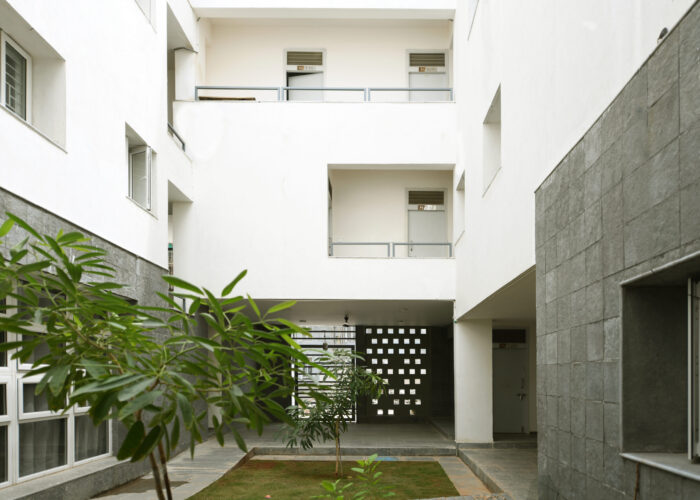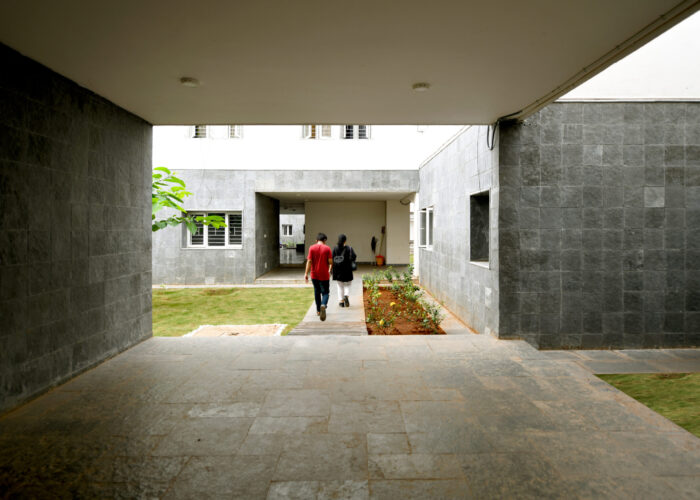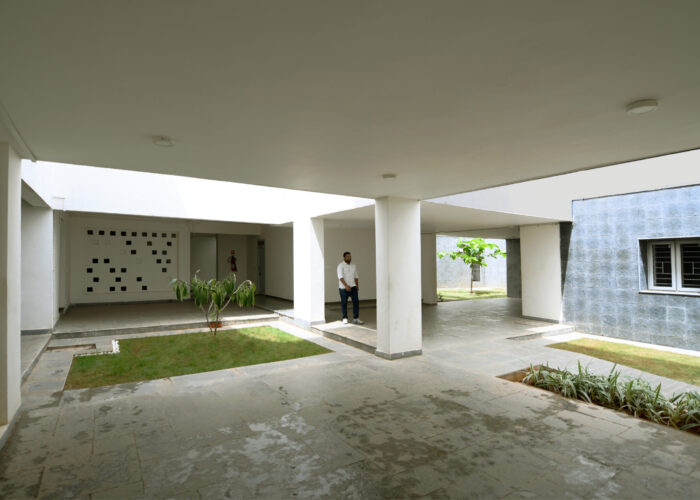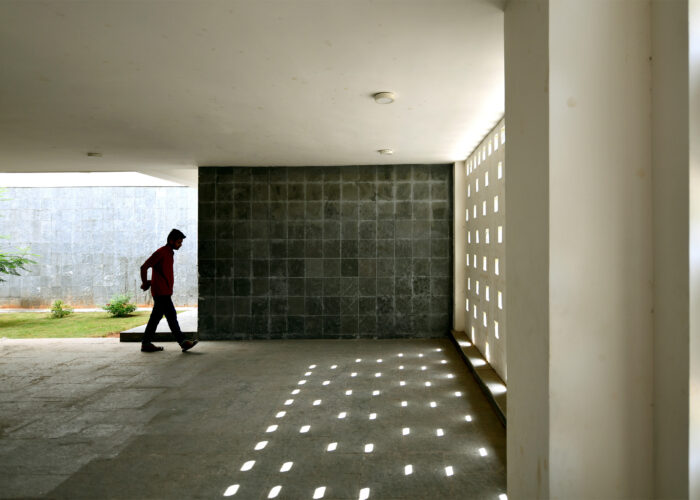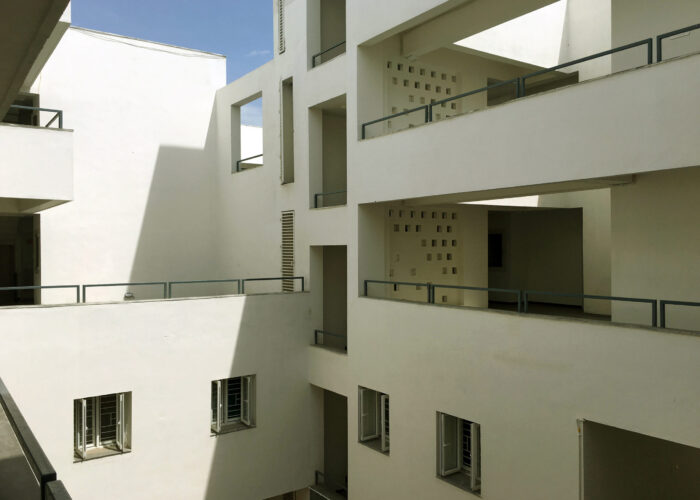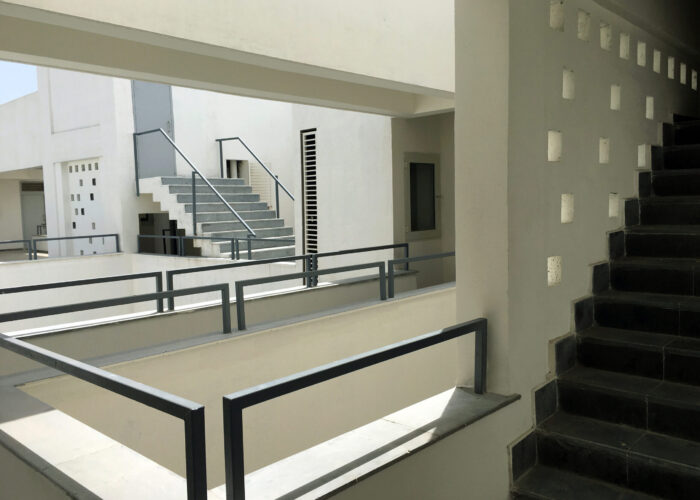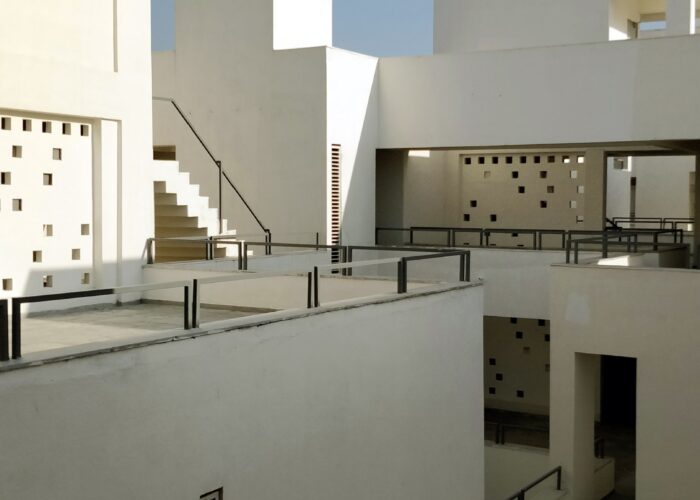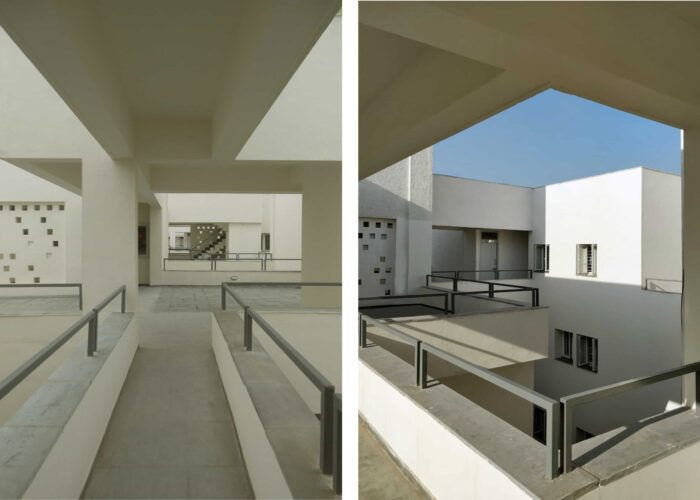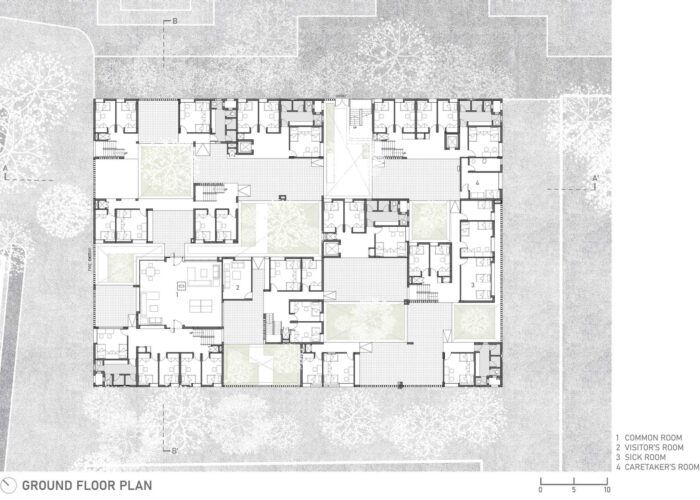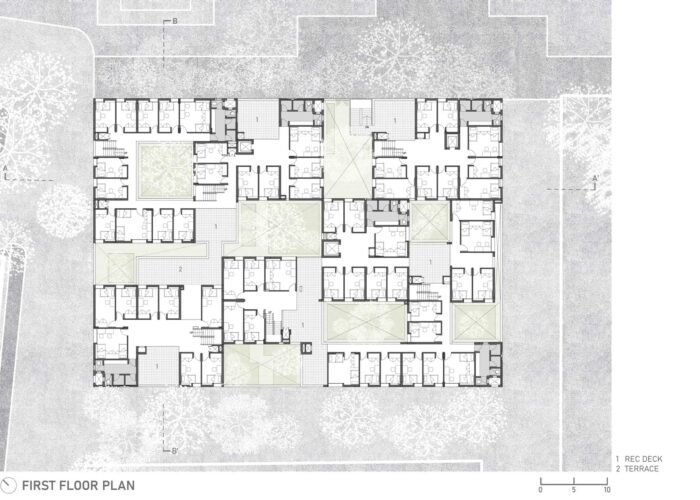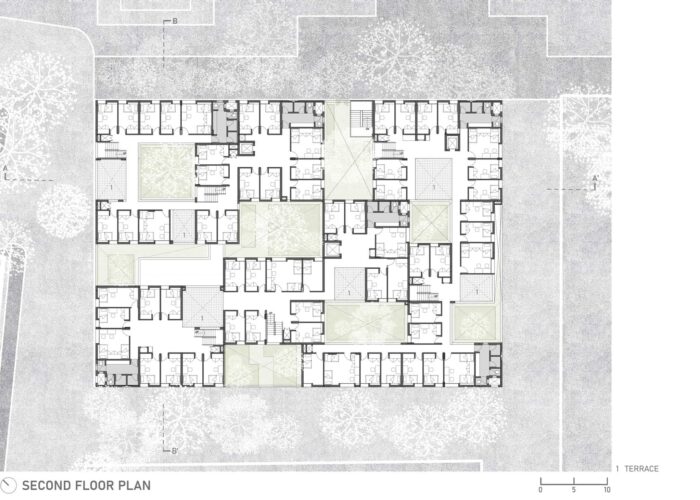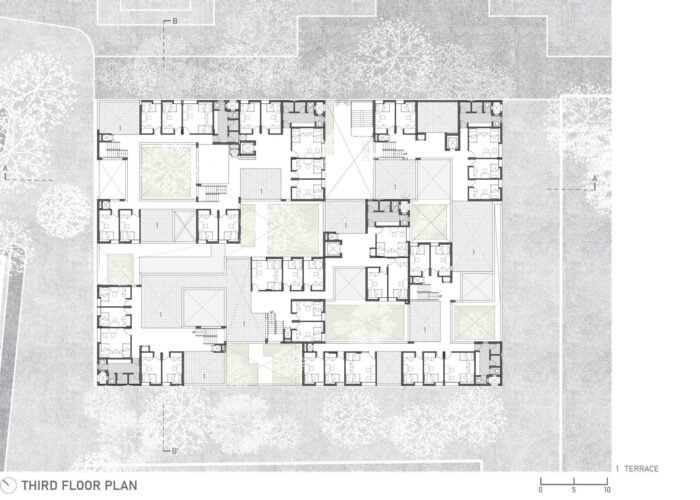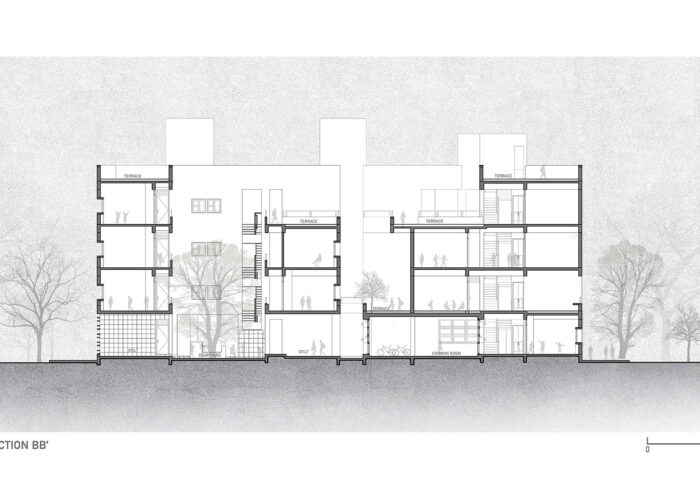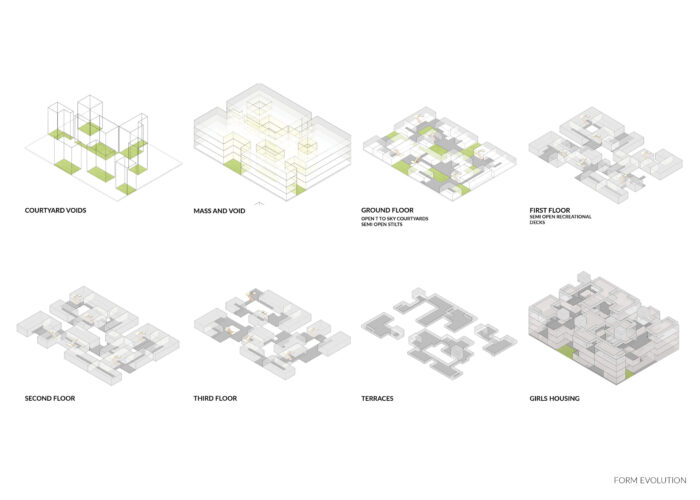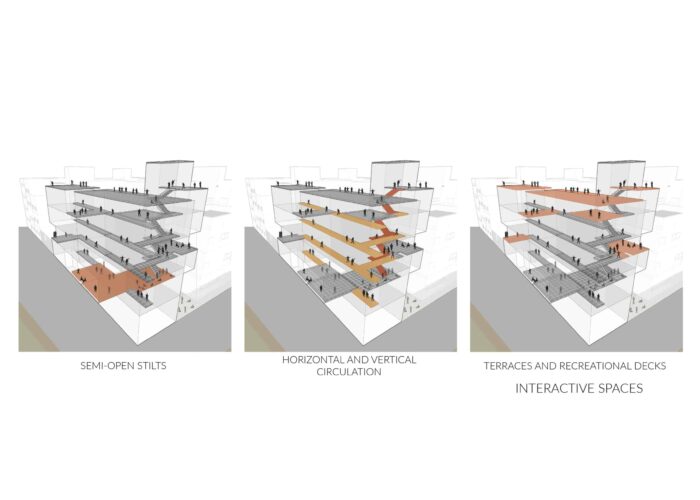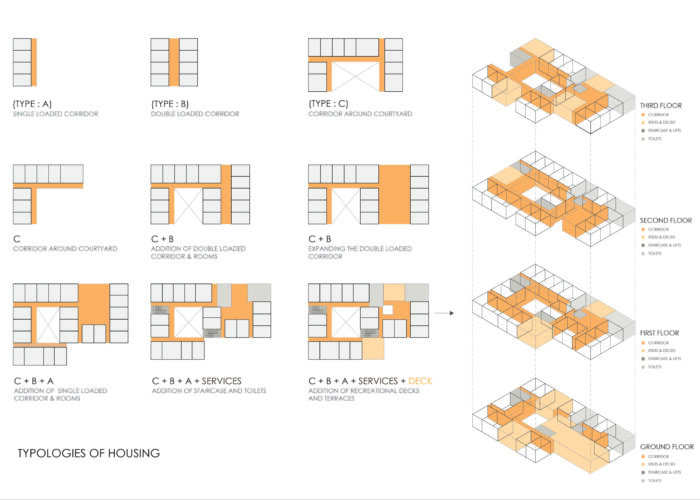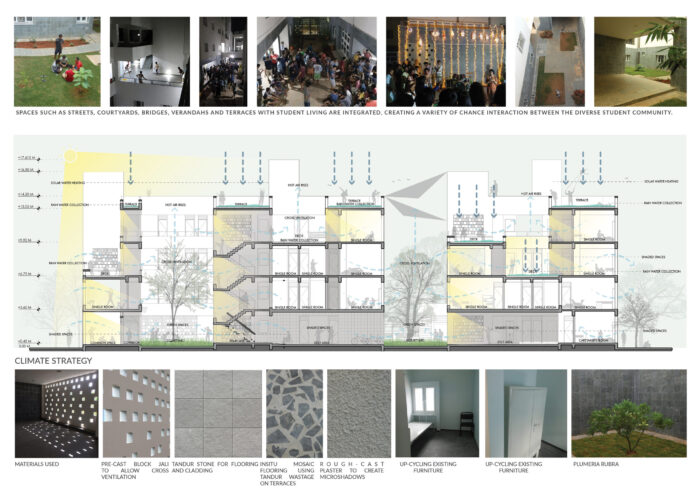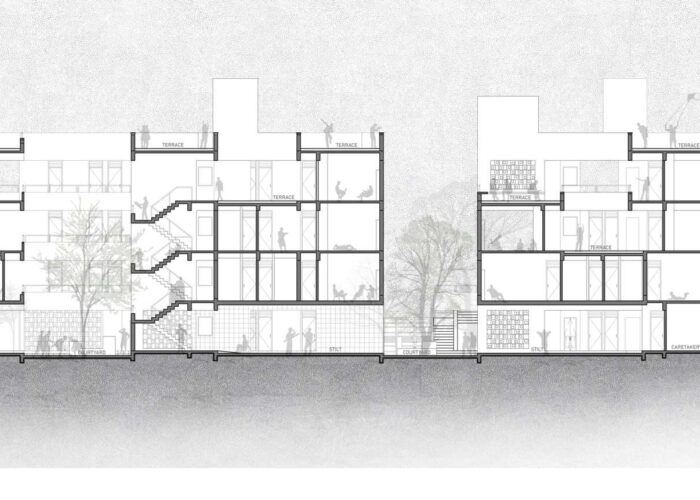Educational | Institutional
School of Planning and Architecture Vijayawada Student Housing
Social Labyrinth (Winning entry in a national open two stage competition)
Concept/Philosophy
Our idea for student group housing stems from an interest in developing inter relationships in which students would participate in a non-hierarchical and rhizomatic nature of exchange.
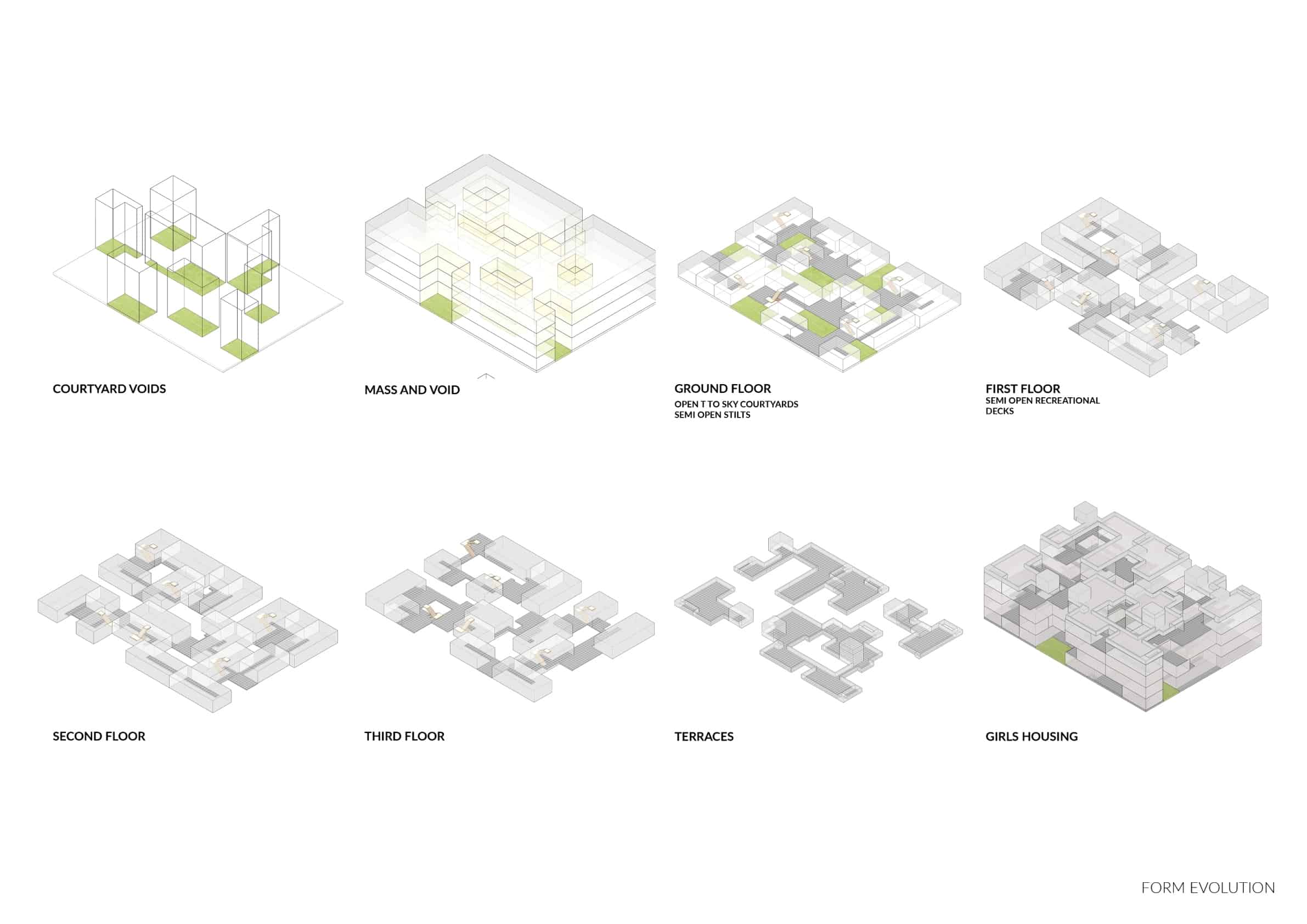
Form evolution
Our approach was to move away from the hermetic dormitory or hostel organizational structure, which fosters a regimented form of social control – a kind of control that restricts learning, living and exchange. The attempt is to create organizational variation, non-linearity, change & flexibility through the integration of programs with non-programmatic spaces thereby integrating both the collective and the individual.
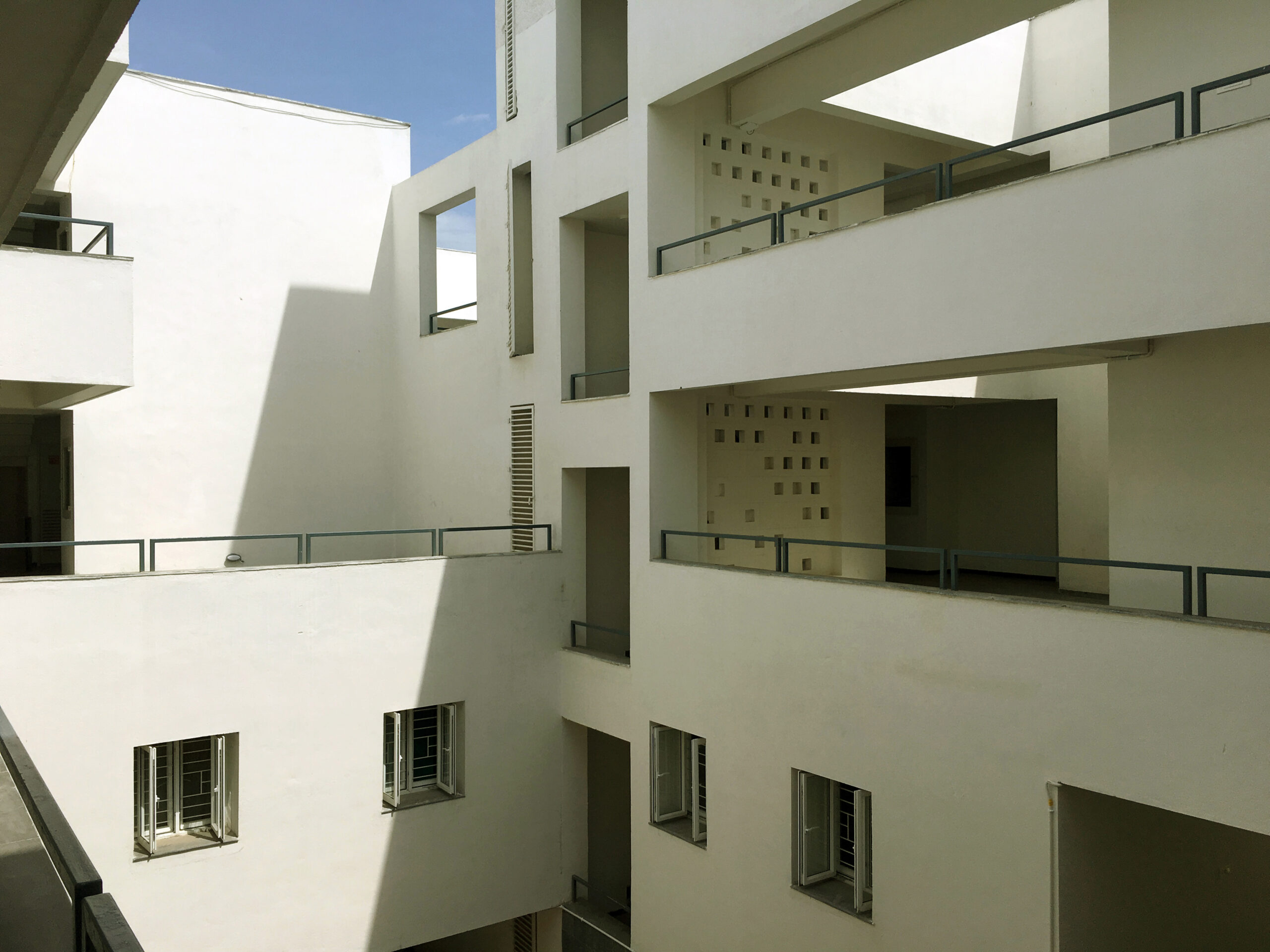
Relationship of terraces, corridors and stairs around the courtyard
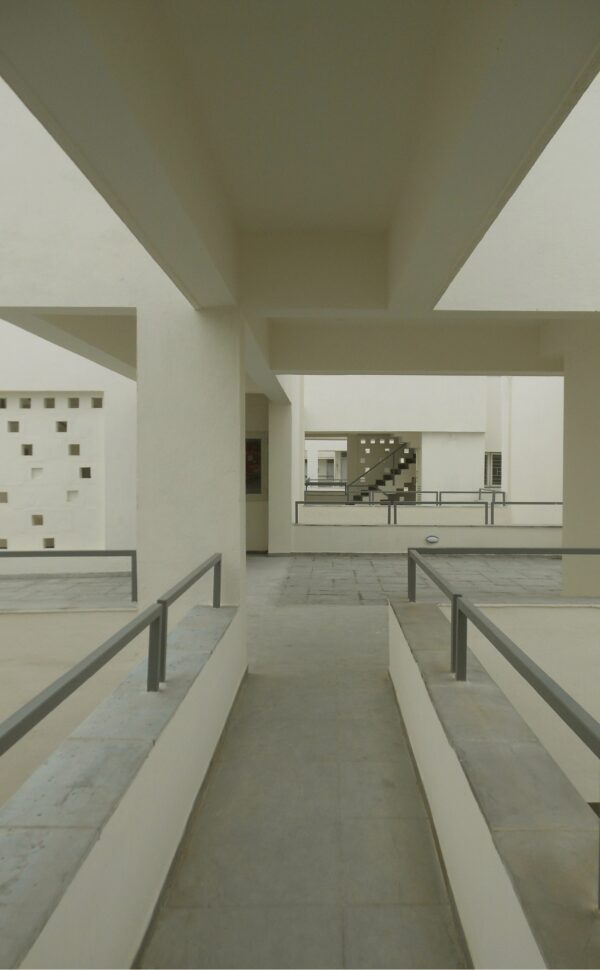
The open endedness of voids
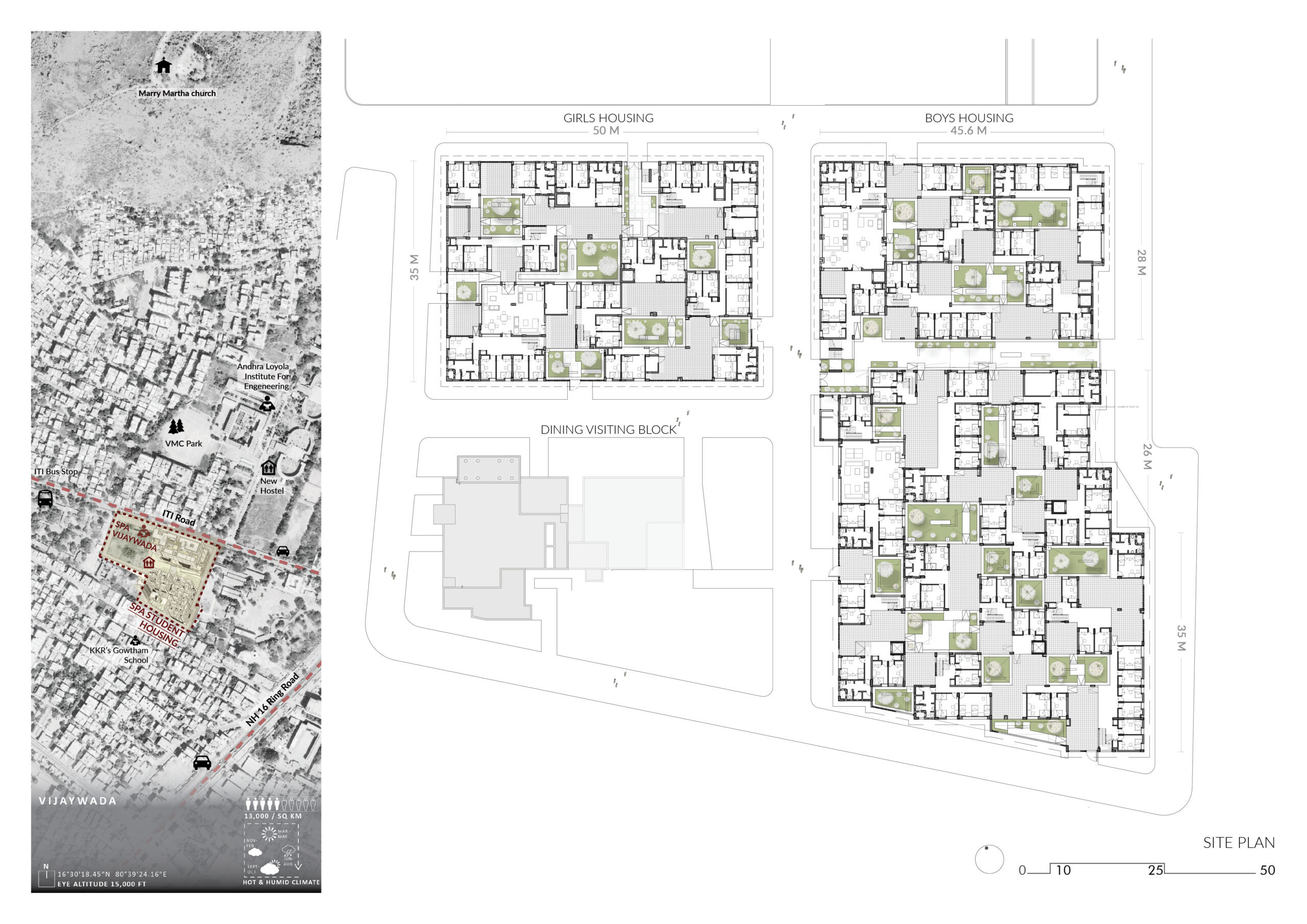
Program and Organisation
The social and cultural lives of students have been captured and highlighted by sequencing common programs along movement trajectories. The common activities are placed adjacent to the circulation creating opportunities for interaction and thereby exchange between students.

The other emphasis is on environmental and climatic aspects of design. The emergent typology is derived from traditional responses to climate and contemporary living relationships. The site and its surroundings informs and influences the positioning of the buildings, and the creation of in-between and peripheral spaces.
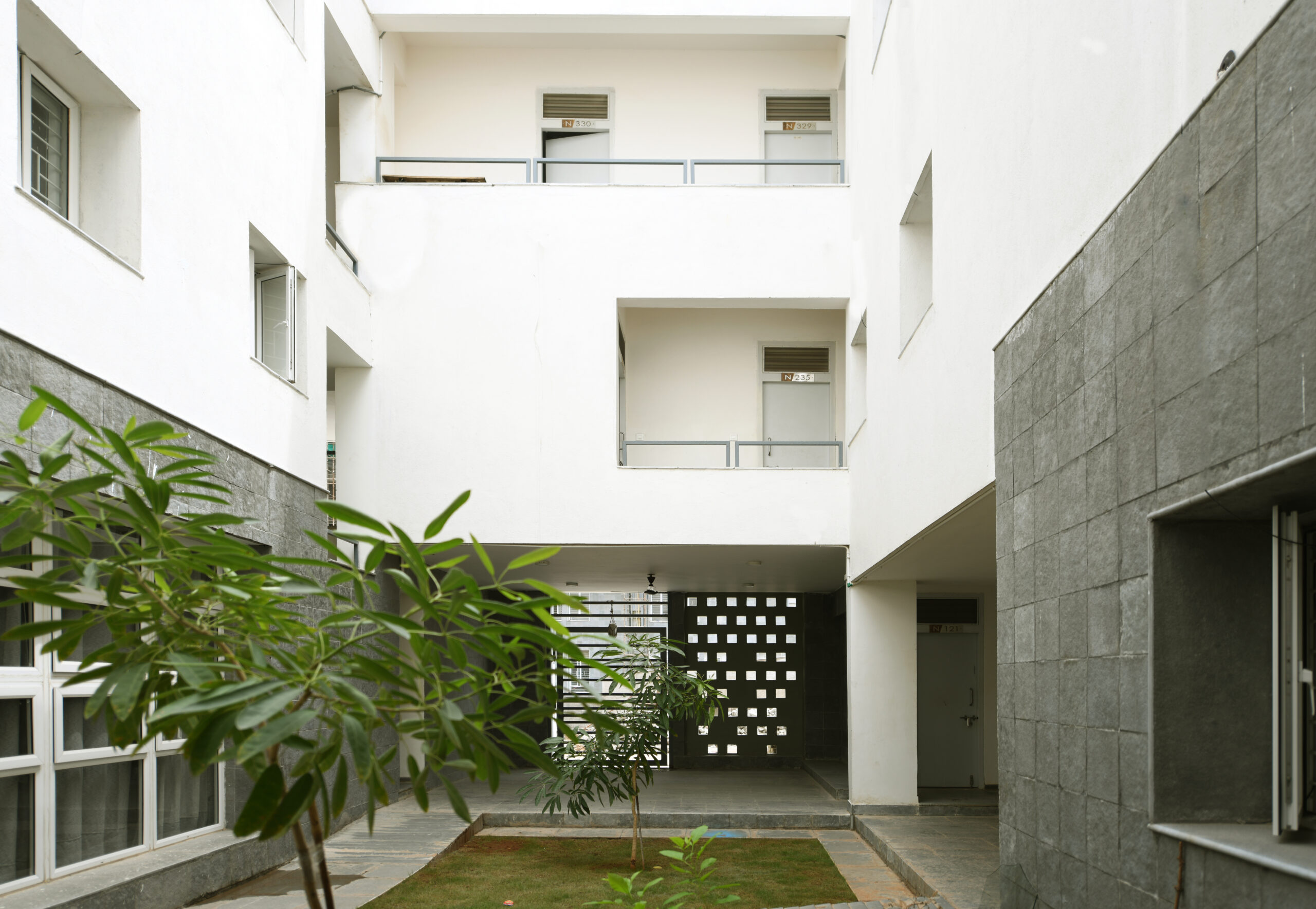
Visual Connectivity between the Inside and Outside
The housing for 775 students allows for multiple smaller building types which are dispersed in balanced clusters around varying scales of living courtyards. The housing is an active pedestrian ground which is stimulated as the streetscape that gets transformed into stilts, verandahs, decks, and courtyards within. The housing breaks the strict definitions of the layers by fragmenting the program areas and other common or non program areas. Though the grain has been maintained by dismantling the defined boundaries of boys housing, girls housing, these seamlessly merge by virtue of the spatial continuum and connective spaces. This creates a lively neighborhood that fosters informal interactions creating a low rise high density student housing environment.

Network Open Spaces
An attempt was made to introduce streets, courtyards, bridges, verandahs and terraces with student living. These spaces we perceive create a variety of chance interaction between students for the diverse faculties and years. This fragmentation is continued on the floors above which allow for semi private interaction zones in the form of terraces and bridges. The Common room program has also been broken down and distributed across the student housing thus allowing for stronger bonds with a smaller scale of the neighborhood.
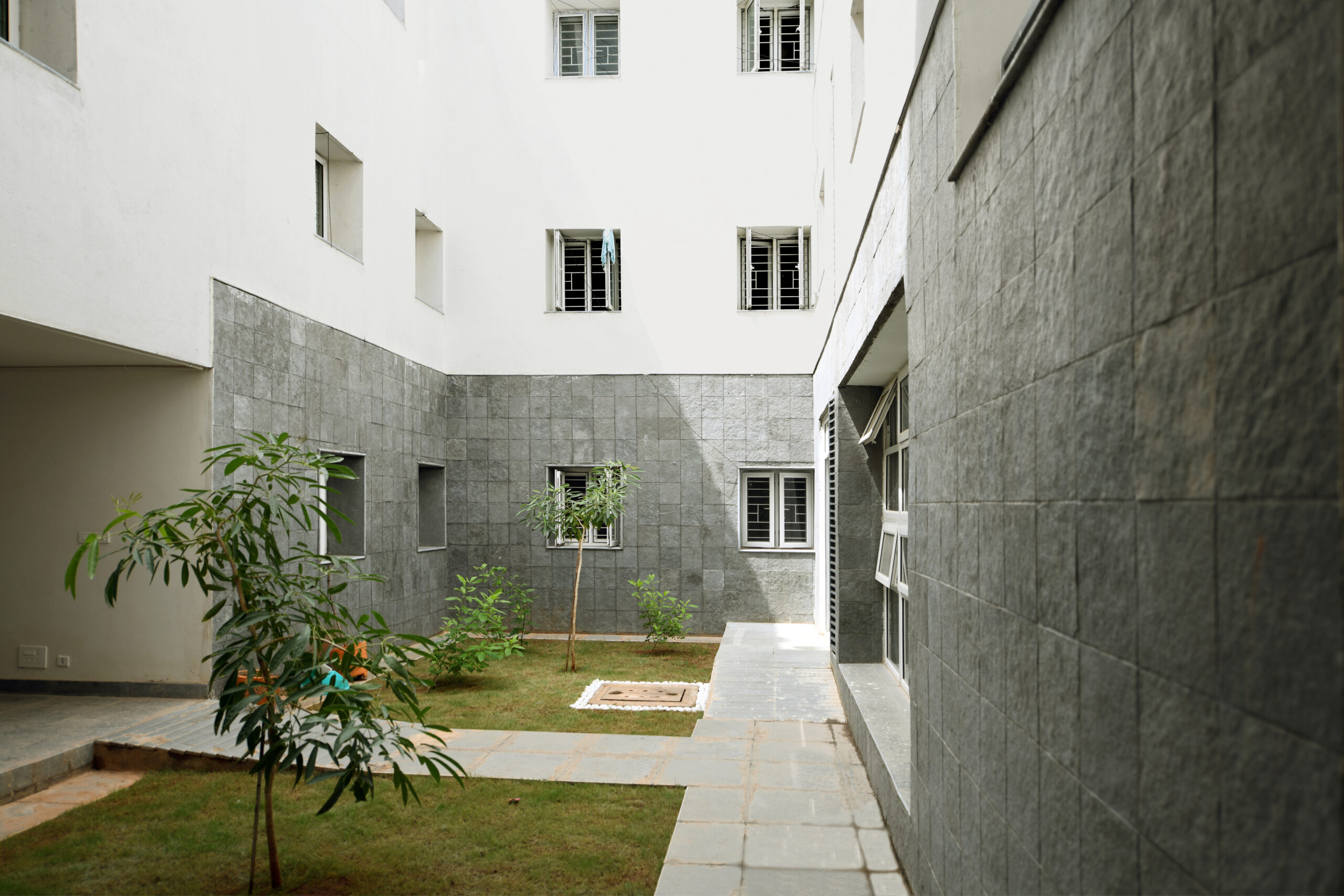
Courtyards Create Shaded Spaces and Pedestrian Connectivity
Climate and Social Sustainability in most old city centers we often notice the network of narrow streets aiding passive cooling and protection from the harsh solar radiations. The school and housing building reintroduces some of these traditional principles of architecture and urbanism to the modern architectural student community. Its potential lies within its subtle and yet sensuous / multi-sensorial spatial experience. The emphasis on detail and the use of local materials such as Tandur stone, fly ash bricks, roughcast plaster could create a space that is at the same time embedded within its cultural context and rich in its appearance.
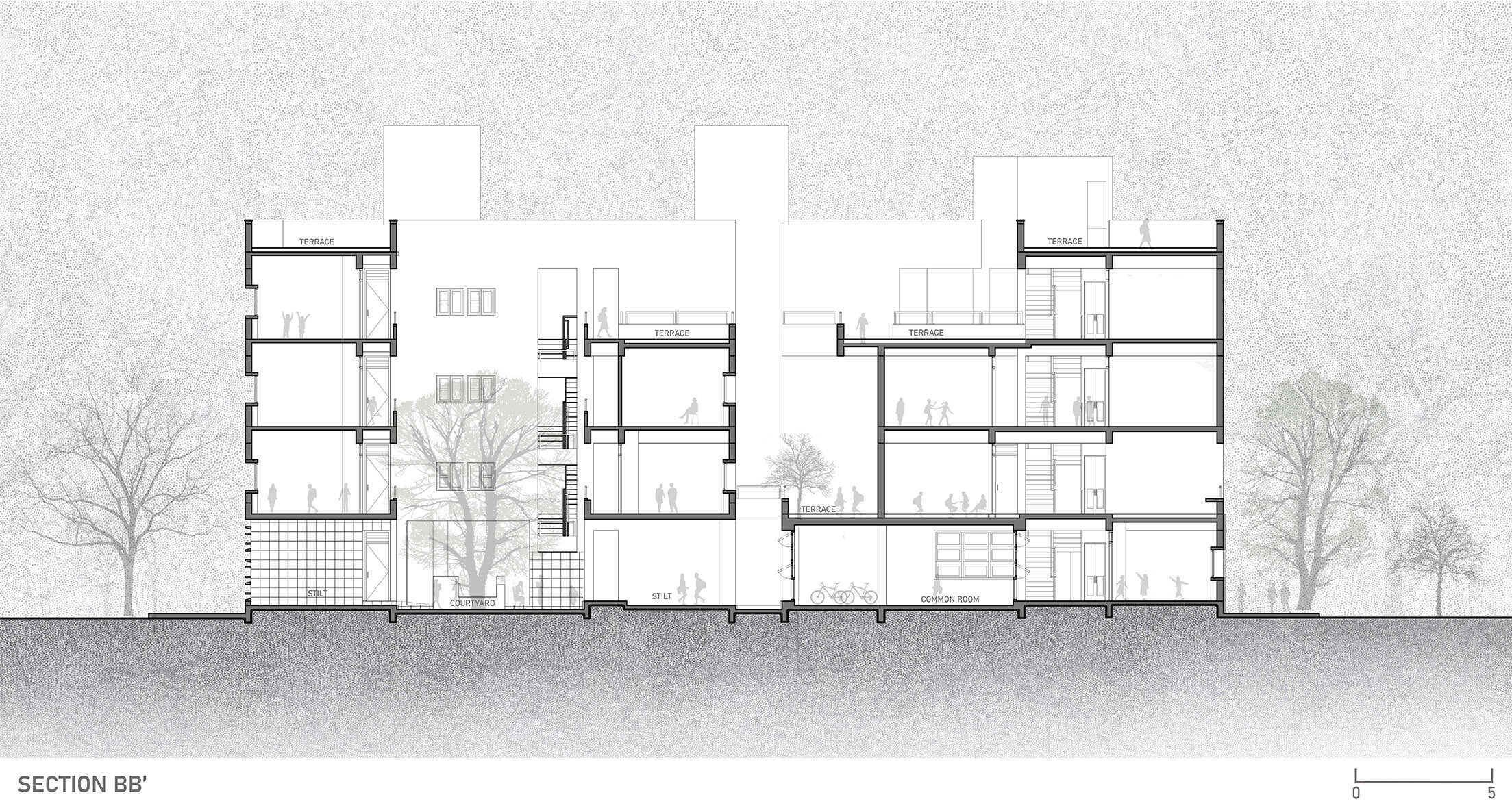

Courtyards form transition spaces within the stilts
The site being in the Krishna river basin is a part of the hot and humid region of the country. Hence, the lower floors are rendered porous in the form of stilts for allowing cooler air through the brick Screen jali walls that have been placed at the outermost peripheries of the hostel blocks. These winds then are channeled through the courtyards, as they funnel the air naturally. The lower stilts are used as common activity spaces during the hot afternoons. The middle section of the buildings has most of the student living programs with efficient circulation. The top section of the building has a mix of living program and terraces, this allows for shadow spaces on the terraces. These terraces are used for evening activities of students as the weather temperatures start to fall.
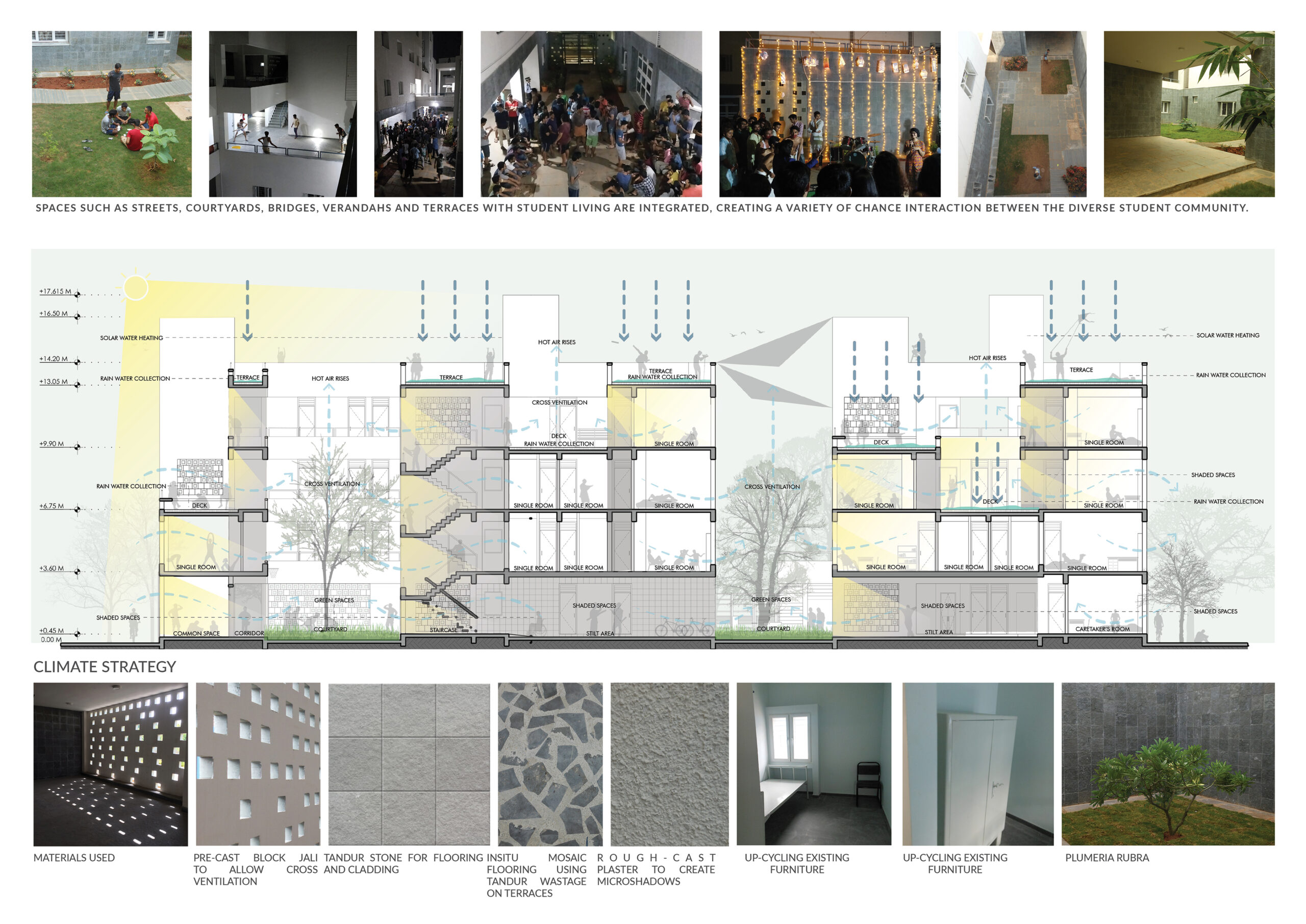
We believe it is these imaginations of cohesive three dimensional network approach to spatial design and planning techniques that considers and reflects multiple aspects of living that allows us to re-establish opportunities for new narratives to emerge.


